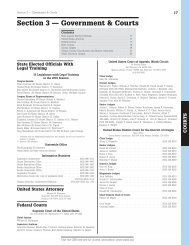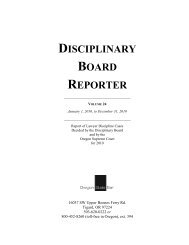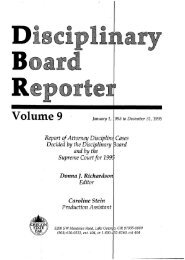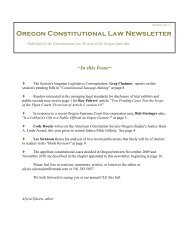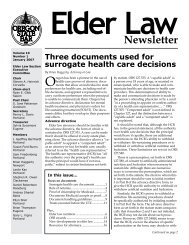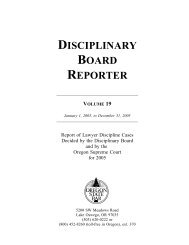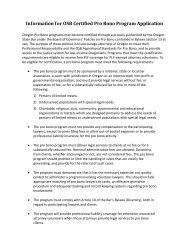Jackson v. Franklin Sports Gazette, Inc. Grading ... - Oregon State Bar
Jackson v. Franklin Sports Gazette, Inc. Grading ... - Oregon State Bar
Jackson v. Franklin Sports Gazette, Inc. Grading ... - Oregon State Bar
You also want an ePaper? Increase the reach of your titles
YUMPU automatically turns print PDFs into web optimized ePapers that Google loves.
identifiable from the Photo. Applicants should apply the following analysis in concluding that<br />
<strong>Jackson</strong>’s claim is unlikely to succeed:<br />
No part of <strong>Jackson</strong>’s face or body can be identified.<br />
One possible identification that could be made is based on <strong>Jackson</strong>’s uniform. But the<br />
uniform design has not changed in 25 years, and, by definition, a “uniform” is uniform—<br />
it is the same for all players on the team. Thus, the Photo could depict any player on the<br />
team. Applicants should support this analysis by referring to and analogizing with the use<br />
of a common swimsuit design by all competitors in Brant.<br />
Applicants should distinguish Holt by noting that the plaintiff there was “identifiable” by<br />
the unique aspects of his clothing (his gold racing suit), and argue that no similarly<br />
unique attributes are present here.<br />
Another possible identification that could be made is based on the partial visibility of<br />
<strong>Jackson</strong>’s uniform number—the last zero in his double-zero number. But, at the time the<br />
Photo was taken, three other Blue Sox players had numbers ending in zero, and, at the<br />
time of the lawsuit, five other players did. Hence, the picture could have been of any one<br />
of four to six different individuals.<br />
The uniform number analysis requires further refinement—as parts of <strong>Jackson</strong>’s<br />
unclothed body (one arm, his neck) are visible in the Photo, were those teammates whose<br />
numbers ended in zero of the same ethnic background as <strong>Jackson</strong>? As <strong>Jackson</strong> is<br />
Caucasian, if all the other teammates whose numbers ended in zero were non-Caucasian,<br />
that might be enough to find <strong>Jackson</strong> identifiable in the Photo. But the facts tell us that a<br />
sufficient number were also Caucasian (two of the three when the Photo was taken, and<br />
all five at the time of the lawsuit) as to preclude the possibility that <strong>Jackson</strong> could be<br />
reasonably identifiable in the Photo.<br />
Is <strong>Jackson</strong> “identifiable” from the text of the advertisement?<br />
Applicants may note that <strong>Jackson</strong> may argue that the text of the advertisement, by its<br />
repeated use of the word “action,” identifies the individual in the Photo as <strong>Jackson</strong> by<br />
using his nickname. This, it could be argued, is a secondary identifying feature like the<br />
distinctive outfit worn by the plaintiff in Holt. In response, applicants might observe that<br />
the statute’s definition of what makes a person identifiable in a photograph is based<br />
4





